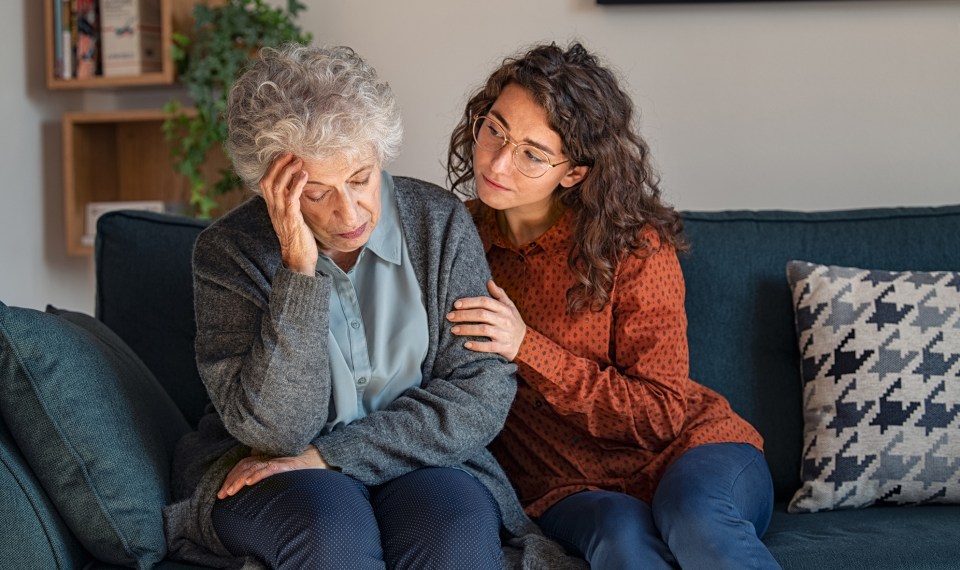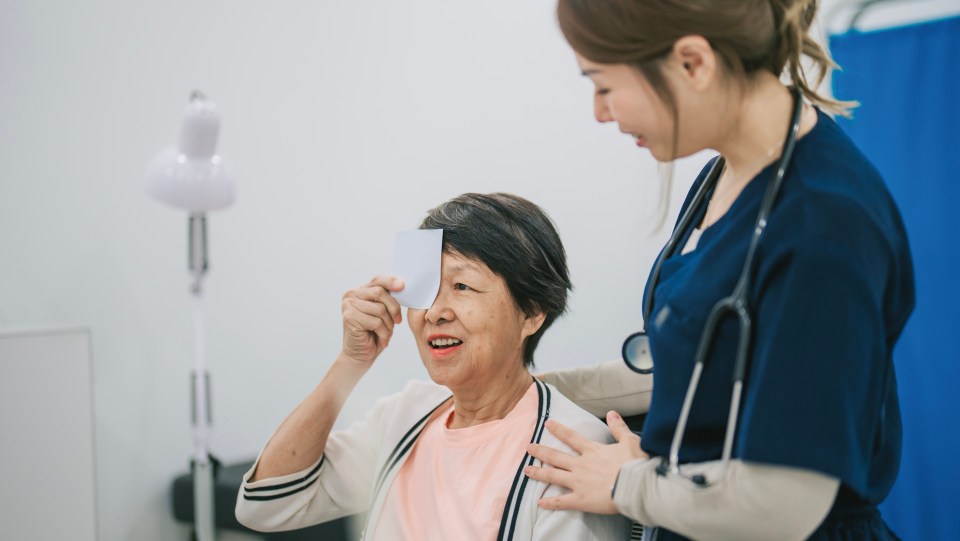The American Stroke Association reports approximately 65% of stroke survivors have vision loss after a stroke. While some recovery is possible, most patients who experience vision loss after a stroke are unable to fully regain vision—but rehabilitation can help.
Why Vision Loss Occurs After Stroke
A stroke occurs when the blood that carries oxygen to the brain is blocked causing brain cells to die. When stroke impacts the area of the brain associated with vision, you can suffer from vision issues such as reading problems, loss of visual memory and reduced depth perception and balance.
Stoke in the occipital lobe of the brain impacts how vision is processed. It is the area most associated with vision, but all areas of the brain receive vision information. The brain stem at the base of the brain controls eye movement, balance and your ability to recognize and understand objects.
Types of Vision Loss
Often vision loss after a stroke affects only a portion of your vision, so you don’t experience full vision loss. Depending on the damage your brain sustains you may experience the following:
- Homonymous-hemianopia. Vision loss in the right or left half of the vision field in each eye.
- Quadrantanopia. Loss of one quarter of the vision field.
- Scotoma. A blind spot that occurs in one or both eyes.
You might also experience neglect, or spatial inattention, that impedes your awareness or ability to respond to things on the side of your body affected by the stroke. Eye movement disorders can also occur if the nerves or muscles of the eye are damaged. This includes rapid eye movement, double vision, difficulty tracking and strabismus (eye turning inward or outward). Some stroke survivors also suffer from dry eyes that can lead to blurry vision.
Diagnosing Vision Loss
Post-stroke vision changes are diagnosed after a full health history and physical examination. Depending on the vision issue experienced, testing may be done to assess:
- Vision clarity
- Visual field
- Eye alignment
- Tracking
Treatment of Vision Loss Due to Stroke
Depending on the vision problems you are experiencing and the root cause of the issue, you may be referred to a vision specialist. Specialists that work with vision loss due to stroke include:
- Neuro-ophthalmologists. Physicians who deal with vision problems due to brain injury.
- Neurologists. Physician specialists who diagnose, treat and manage disorders of the brain and nervous system.
- Ophthalmologists or optometrists. Doctors who treat eye disorders.
- Orthoptists. Healthcare professionals who diagnose and treat eye disorders. They often work with ophthalmologists and optometrists
- Occupational therapists. Therapists trained in helping patients improve their ability to perform daily tasks and activities. This includes assistance in compensating for visual and eye motor impairments or regaining ability.
Treatment of vision impairment is based on the diagnosis, but early identification and therapy is extremely important. Some vision recovery is possible, usually within the first few months after stroke. Depending on the vision deficit you are experiencing, the following are just a few of many therapies that may be employed:
- Scanning eye training. These techniques can help compensate for vision loss. While the eyes may be functioning normally, the brain may not be able to correctly process the information. Visual scanning encourages you to consciously pay attention to objects on the side affected by stroke. There are many tasks that can be employed to help improve visual awareness.
- Audio and visual stimuli combinations. Complete or partial blindness caused by cerebral infarction may be treated using systematic AV training.
- Prismatic lenses. When visual field loss is present, prismatic lenses may be helpful. Using specialized prisms to create a larger field of vision, you may be able to read or navigate more easily. Prismatic lenses may also be useful in cases where there is eye misalignment causing headache, stress, eye strain, or discomfort.
- Eye exercises. Working the eye muscles by alternately focusing on objects near and far can improve neuroplasticity (the brain’s ability to change and adapt through new experiences).
- Limb activation. Hemineglect, an unawareness of one side of the body, is caused by injury to the parietal lobe of the cerebral cortex. Most often the injury occurs on the right side of the brain resulting on the left side of the body being ignored. Patients with hemineglect behave as though the area opposite the injured area doesn’t exist and awareness of the affected side of the body is lost. Limb activation therapy is focused on encouraging active limb movements on the neglected side of the body to reduce visual neglect.
Inpatient Rehabilitation Therapy for Vision Problems
Occupational therapy plays a vital role in the treatment of visual deficits following stroke. During inpatient rehabilitation, the therapies to restore or improve visual performance should begin early in the recovery phase to offer the best chance for at least partial vision restoration.
When visual function is lost and cannot be restored, occupational therapists are also skilled in adaptive and compensatory methods to help you gain independence and adjust to vision deficits. Your occupational therapist may also recommend adaptive equipment such as magnifiers or smart home devices.
Vision is important to quality of life and independence. Vision loss can also adversely impact physical recovery since it can hinder the ability to participate in therapy. Addressing vision problems is a vital part of stroke rehabilitation.
The content of this site is for informational purposes only and should not be taken as professional medical advice. Always seek the advice of your physician or other qualified healthcare provider with any questions you may have regarding any medical conditions or treatments.



